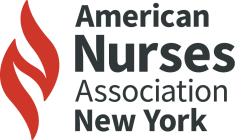News & Announcements
American Nurses Foundation Announces New $10,000 Microgrants for Research on AI and Innovation in Nursing
December 22, 2025
In partnership with Hippocratic AI, a request for rapid proposals is now open for three microgrants to be awarded to nurse-led research teams
SILVER SPRING, MD – November 11, 2025 – Today, the American Nurses Foundation (ANF) announced a rapid request for proposals support Nurse-Led Solutions Using AI and Innovation. Up to three microgrants valued at $10,000 each will be awarded to nurse-led teams who can explore the connection between AI and nursing and discover new nurse-led solutions to issues impacting nurses using AI. These microgrants are funded through a generous partnership with Hippocratic AI, a global leader and pioneer in generative AI healthcare agents, that is committed to quality healthcare and nurse empowerment that improve patient outcomes.
This microgrant opportunity is designed as part of a larger initiative to strengthen nurse leadership and innovation with a focus on early-career nurses. In addition to funding nurse-led projects, this grant is intended to nurture catalysts for healthcare transformation through leadership development and peer learning. Both ANF and Hippocratic AI believe nurses are critical decision-makers and are uniquely positioned as leaders in the age of AI who are capable of developing innovative solutions for nurses by nurses.
“At Hippocratic AI, we believe the future of healthcare innovation must be shaped by nurses, who are the clinicians that best understand the realities of patient care,” said Amy McCarthy, Chief Nursing Officer at Hippocratic AI. “Our partnership with the American Nurses Foundation reflects our shared commitment to empowering nurses as leaders in AI adoption. Through these microgrants, we’re helping nurses turn their ideas into action, funding projects that demonstrate how AI can safely and meaningfully improve care delivery, reduce burden, and advance the profession.”
Nurses at all career stages are encouraged to apply for these microgrants, but particular consideration will be given to clinical bedside nurses with at least 3-5 years of nursing practice experience and the ability to partner with a C-suite nurse leader to apply lessons learned. Some of the priority areas of interest include exploring the use of AI agents and application before a patient procedure, nurse-friendly AI tools and interactions, and strategies to increase use of AI in nursing and reducing skepticism. Proposals must also align with microgrant goals and indicate clear and feasible implementation.
“We are very grateful to Hippocratic AI for their generous partnership with the American Nurses Foundation to launch this microgrant opportunity dedicated to harnessing the power of nurse-led solutions,” said Graig Eastin, Executive Director of the American Nurses Foundation. “We’re seeking proposals that don’t just imagine what might be possible but demonstrate how nurse-led solutions can transform patient care and improve the health of communities. We look forward to receiving bold, thoughtful, and actionable proposals that turn ideas into evidence, and evidence into impact.”
All application responses are due on February 17, 2026 @ 4pm EST via ANF’s online Submission Portal, and notification of grantees are expected in April. An informational call for prospective applicants will be held on November 19 at 4pm EST. No registration is required. To participate in this informational call and learn more about eligibility and other application requirements, please dial in via this link: AI Microgrant RFP Informational Call
Additional Articles
December 8, 2025
Support for Evidence-Based Immunizations Following CDC Panel Vote on Hepatitis B Vaccine
ANA Urges Evidence-Based Decision-Making and Policies that Protect the Hea…
December 3, 2025
Molloy University Highlights Legislative Forum & Doctoral Nursing Excellence
ANA-NY is proud to share recent highlights from Molloy University’s PhD in…
December 2, 2025
ANA Government Affairs: Ongoing Actions & Engagement
Over the past several weeks, the nursing community has mobilized in respon…
December 1, 2025
Health Workforce Dashboards Update
The Health Resources and Services Administration (HRSA) has released updat…
November 24, 2025
Sign the Petition: Nursing Graduate Students Left Out of New Federal Loan Caps
Graduate nursing students may soon face lower federal loan caps under a…
November 21, 2025
ANCC Magnet Recognition Program® Highlighted as Key Indicator in Newsweek’s 2026 America’s Best-in-State Hospitals Rankings
Recognition underscores Magnet® hospitals’ leadership and nurses’ role in…
November 18, 2025
Iona University Renames School of Health Sciences to Reflect Excellence in Nursing Education, Announces Nursing Master’s Accreditation
NEW ROCHELLE & BRONXVILLE, N.Y. (November 13, 2025) — Iona University…
November 16, 2025
Statement from the American Nurses Association on Proposed Federal Loan Policy Changes
Excluding nursing from professional degree classification jeopardizes effo…
November 16, 2025
New York State Releases First-Ever Maternal Mental Health Report
The Office of Governor Kathy Hochul has released New York State’s first-ev…
November 16, 2025
Nurses Across New York (NANY) Loan Repayment Program Now Accepting Applications
The New York State Department of Health has announced that the Nurses Acro…
Copyright © American Nurses Association of New York. All rights reserved.
Powered by ![]() Flight Creative Group
Flight Creative Group
